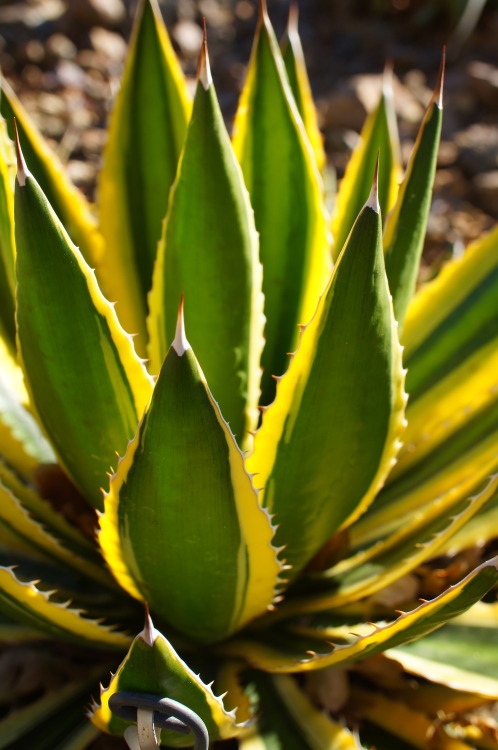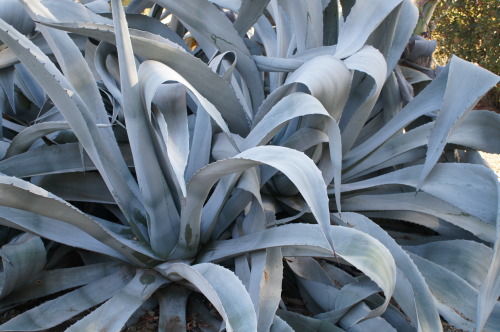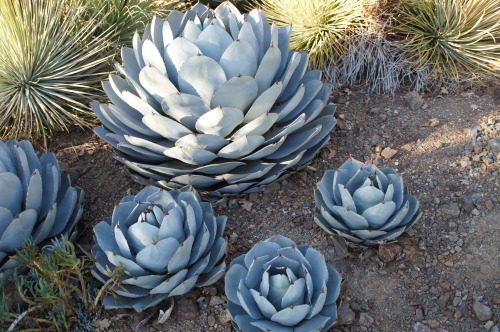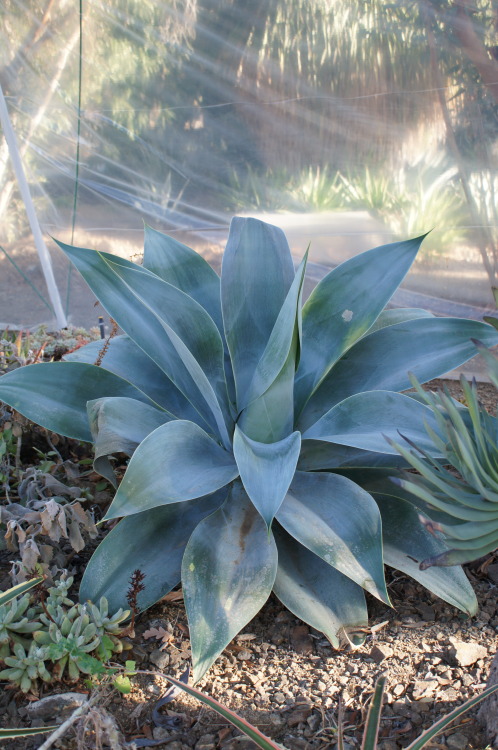flora-file: flora-file: Agaves at the Bancroft Garden (by flora-file) Agaves are a hardy n
flora-file: flora-file: Agaves at the Bancroft Garden (by flora-file) Agaves are a hardy new world genus endemic to both North and South America. Some species can get quite large, and the flowers especially are well known for attaining alarming tree-like size. Most species are monocarpic, meaning the rosettes die after flowering. Sometimes new pups can form below or around the main plant and it survives, but often the spectacular two-story flower stalk marks the end of the plant. Agaves have many practical purposes. They have sturdy leaves containing many tough fibers. These fibers can be used for ropes, textiles and other materials. The plant was called maguey and was a very important cultivated crop for many indigenous cultures. The long, pointy needle on the end of the leaf can be carefully peeled back with its long central fiber still attached, to create an instant needle and thread. Both the flowers and the piña (center of the plant) are edible, and the sap was traditionally used to make sweeteners and alcoholic beverages long before the Columbian exchange. Pulque is an undistilled beverage sometimes called aquamiel, or honey water. Distillation of pulque results in the far stronger Mezcal. Mezcal can come from numerous species of Agave, but Tequila must come from Agave tequiliana specifically.Formerly Agaves were placed in their own family, Agavaceae, with some of their close cousins like Beschorneria, Furcraea, Hesperaloe, Hesperoyucca, and Yucca. More recently the family has been reclassified and tossed into the newly conglomerated family Asparagaceae, subfamily Agavoideae. A few other botanical families were also swept into Asparagaceae. which is now divided into seven separate subfamilies. (1) -- source link
Tumblr Blog : flora-file.tumblr.com
#tequila#ethnobotany#botany#planblr#taxonomy






